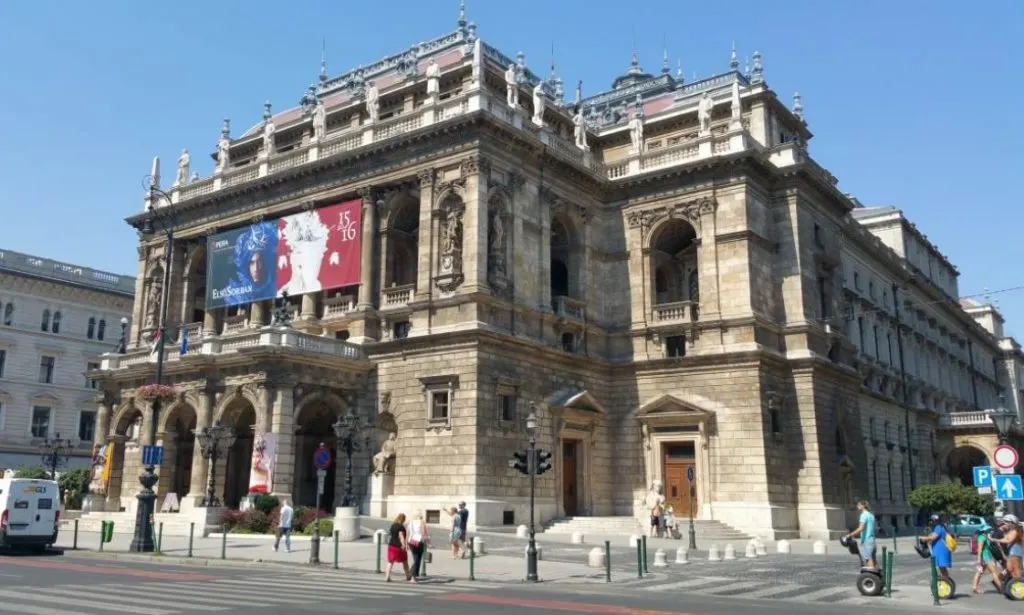One of the greatest opera houses in the world can be found in a country in Eastern Europe. It has an extensive history and remarkable architectural design, making it one of the most amazing landmarks in Budapest.
Let’s take a closer at some of the most interesting facts about the Hungarian State Opera House, an architectural marvel with some fascinating stories to tell.
1. It’s located in the historical heart of Hungary’s capital
The Hungarian State Opera House is an opulent opera house located in the historical heart of Budapest, the capital of Hungary. It’s located on Andrássy Avenue, a major thoroughfare in the city center.
This boulevard was constructed in 1872 and features some of the city’s most famous landmarks, including Heroes’ Square, a major square in the city. Here you can find popular museums such as the Palace of Art and the Museum of Fine Arts.
The Danube River is just a few hundred meters to the west. Other famous landmarks such as the Hungarian Parliament Building and Buda Castle (on the opposite bank of the river) are just walking distance away as well.
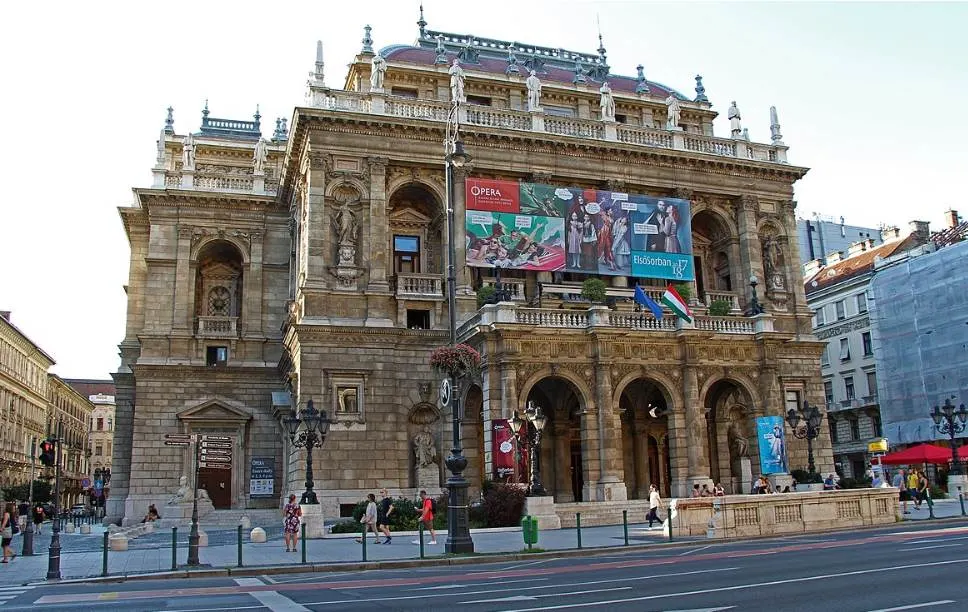
2. The building was constructed in the late 19th century
There were already opera performances in the city in the early 19th century. This greatly increased when two organizations arrived called the Kasa National Opera and Theatrical Troupe in 1835.
They initially held performances at the Castle Theater of Buda Castle and after merging, they had established the “Nemzeti Színház” or “National Theatre.”
The need for a new opera house became apparent later that century. Other famous opera houses had been constructed all across Europe, including the Vienna State Opera and the Palais Garnier in Paris, so plans were made to build one here as well.
The construction of the building started shortly after Andrássy Avenue was completed in 1875 and it opened its doors less than 10 years later in 1884.

3. The opera house was designed by a renowned Hungarian architect

The building is a combination of Renaissance Revival and Baroque architecture. The roof of the building is lined with sculptures and the interior is designed with paintings. These were produced by some of the greatest Hungarian artists in history.
The design of the structure was created by a Hungarian architect named Miklós Ybl (1814-1891). He was one of the greatest Hungarian architects of the 19th century and designed multiple buildings in Budapest and other parts of the country.
The Hungarian State Opera House is his most famous work and other notable buildings that he designed include the Palace of Customs, Károlyi Palace, and Saint Stephen’s Basilica.

4. The auditorium features a chandelier that weighs over 3 tonnes
The interior of the building is dominated by the Grand Staircase and is heavily ornamented with gold decorations and marble pillars. The wrought-iron lamps provide a remarkable atmosphere inside the building.
The horseshoe-shaped auditorium is not only praised for its impeccable acoustics but also features one of the most stunning chandeliers you’ll ever come across.
This bronze chandelier weighs 3,050 kilos (6,724 lbs) and illuminates the magnificent ceiling of the hall. This ceiling features a fresco that depicts the Greek gods on Mount Olympus and was painted by a German-Hungarian artist named Károly Lotz (1833-1904).
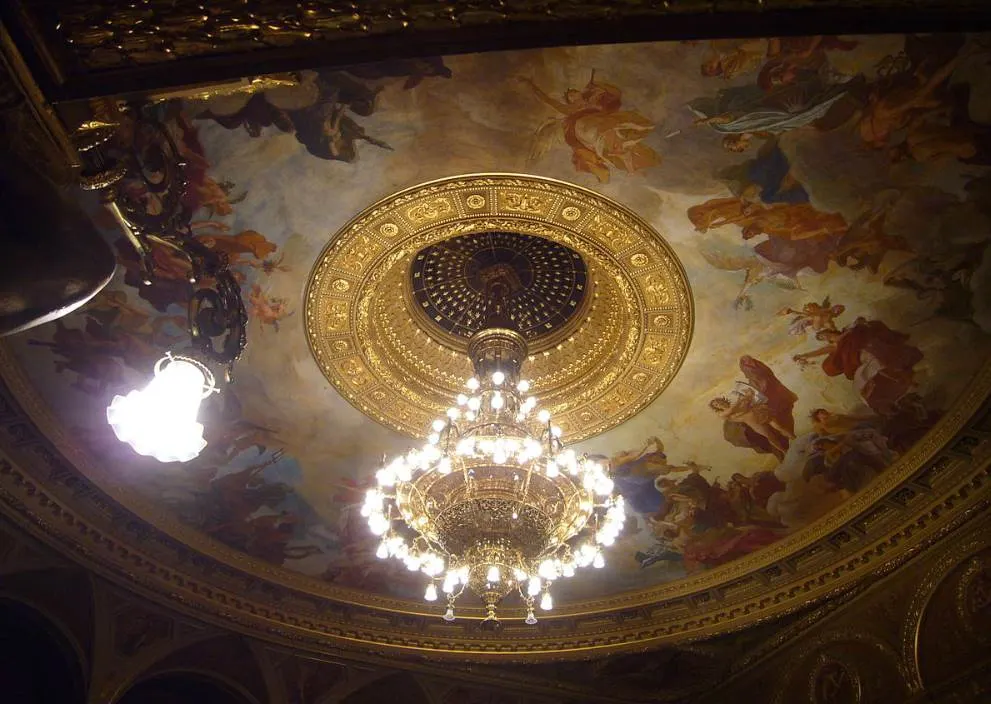
5. It’s only the second-largest in the city in terms of capacity
The Hungarian State Opera House is the main venue of the Hungarian State Opera, the official opera company in the country. Despite being the main venue, it’s not the largest opera house owned by this company.
The Erkel Theatre opened its doors in 1911 as the “Népopera” or the “The People’s Opera” and became part of the Hungarian State Opera in 1951.
This building was renovated multiple times throughout its history and currently has a seating capacity of 2,400. This makes it the largest opera house in both Budapest and all of Hungary.
The Hungarian State Opera House has a capacity of 1,261 seats which can be expanded to 1,300 on special occasions. This makes it the second-largest opera house in the country.

More interesting facts about the Hungarian State Opera House
6. The opera house isn’t the only remarkable neo-Renaissance building located at Andrássy Avenue. The entire street is lined with amazing townhouses, many of which are occupied by popular fashion stores.
7. Andrássy Avenue and the Millennium Underground that extend to the Danube River and Buda Castle were inscribed as UNESCO World Heritage sites in 2002. Both were constructed in the second half of the 19th century.
8. There are two niches right next to the main entrance of the building. These niches feature statues of two of the most famous Hungarian composers in history.
These are Ferenc Erkel (1810-1893), the composer of the national anthem of Hungary, and Franz Liszt (1811-1886), the best-known Hungarian composer in history.
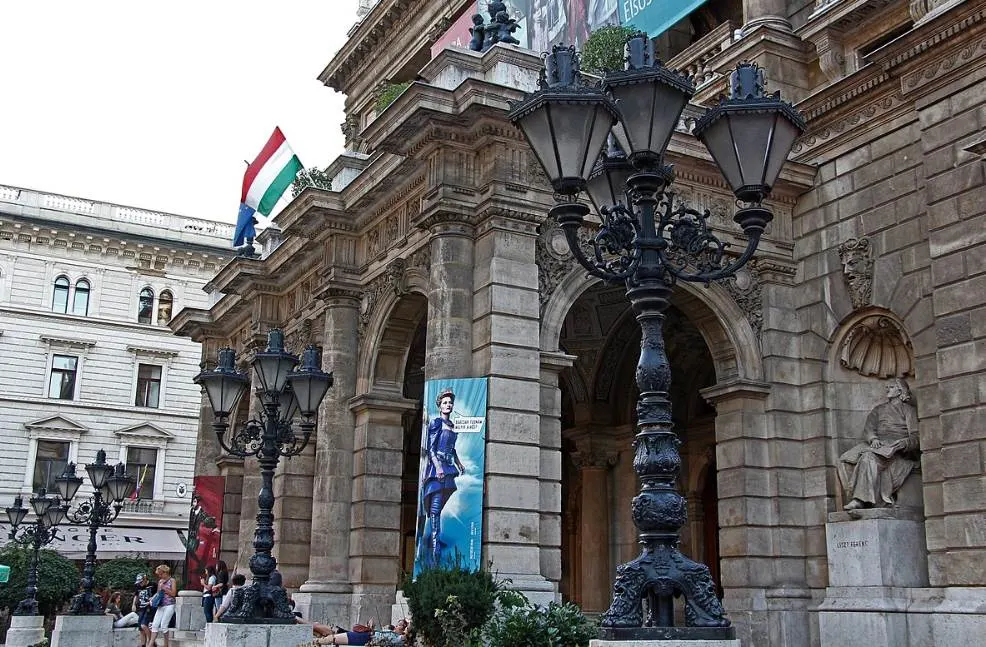
9. Some of the greatest composers and music directors in history have performed at the Budapest opera house. Two of the most famous were Gustav Mahler (1860-1911) between 1888 and 1891 and Otto Klemperer (1885-1973) between 1947 and 1950.
10. The royal box of the auditorium is located in the central part at the back of the auditorium. This box is decorated with allegorical sculptures that represent the 4 main operatic voices soprano, alto, tenor, and bass.
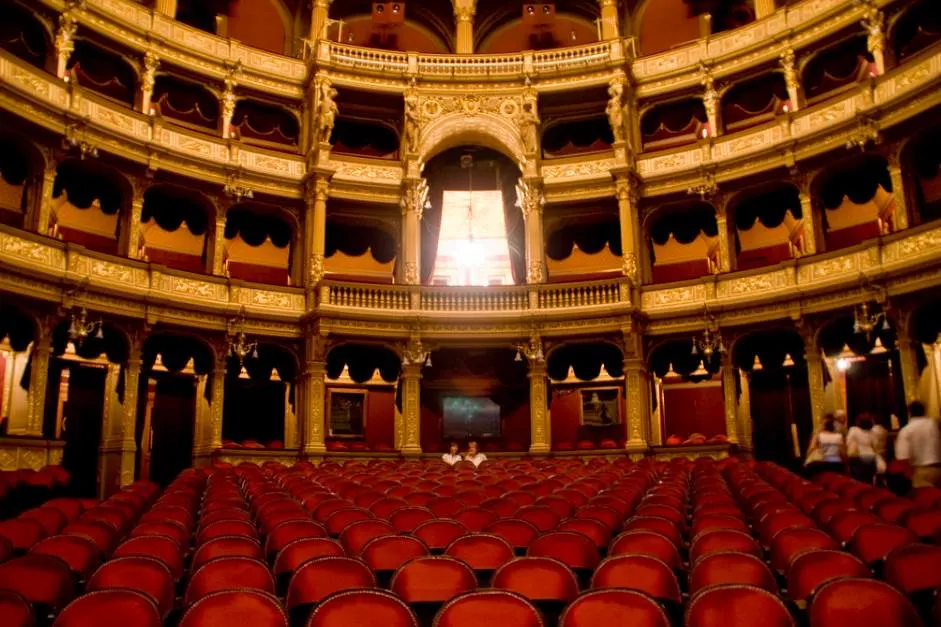
11. The opera house isn’t merely used for opera but also ballet. It’s the home of the Hungarian National Ballet. It’s also the venue for the yearly Budapest Opera Ball, an event that was first held in 1886.
12. You don’t have to be an opera fan to visit the Hungarian State Opera House building. There are guided tours available just about every day of the week in multiple languages. This allows you to admire the architecture and learn all about the building’s history.
